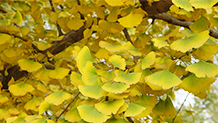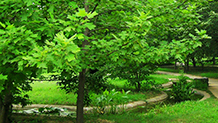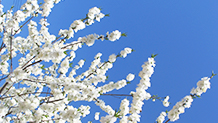Response of Ginkgo biloba growthphysiological traits to ozone stress
作者:Chen B, Xu 时间:2023-04-16
Ginkgo biloba, the main greening tree species in Beijing, was used to study the effects of elevated ozone (O3) concentrations on physiologyecology using an open-top air chamber (OTC). We set three O3 concentration gradients (NF: normal atmospheric O3 concentration; NF40: normal atmospheric O3 concentration plus 40 nmol/mol; NF80: normal atmospheric O3 concentration plus 80 nmol/mol). Based on the theoretical basis of the coupling of O3transpiration through stomata, the O3 uptake from the leaf surface of G. biloba was studied under artificial control. The results showed that with the O3 concentration increased, the leaves of G. biloba were damaged, stomatal density, stomatal aperture, stomatal size, net photosynthetic rate, transpiration rate, stomatal conductance,chlorophyll content decreased, while intercellular CO2 concentrationsrelative conductivity increased. The monthlydaily variations in the liquid flow density of G. biloba decreased with the increase in O3 concentration. Similarly, water consumptionthe ozone uptake rate (FO3) of G. biloba decreased with the increase in O3 concentration: Water consumption by the entire tree under the NF40NF80 ozone concentrations decreased compared to NF, the rates of decline were 68.77%78.38%, respectively. The rates of FO3 decrease were 15.48%31.04%, respectively.










